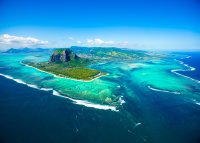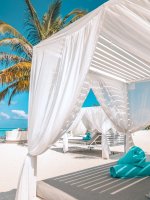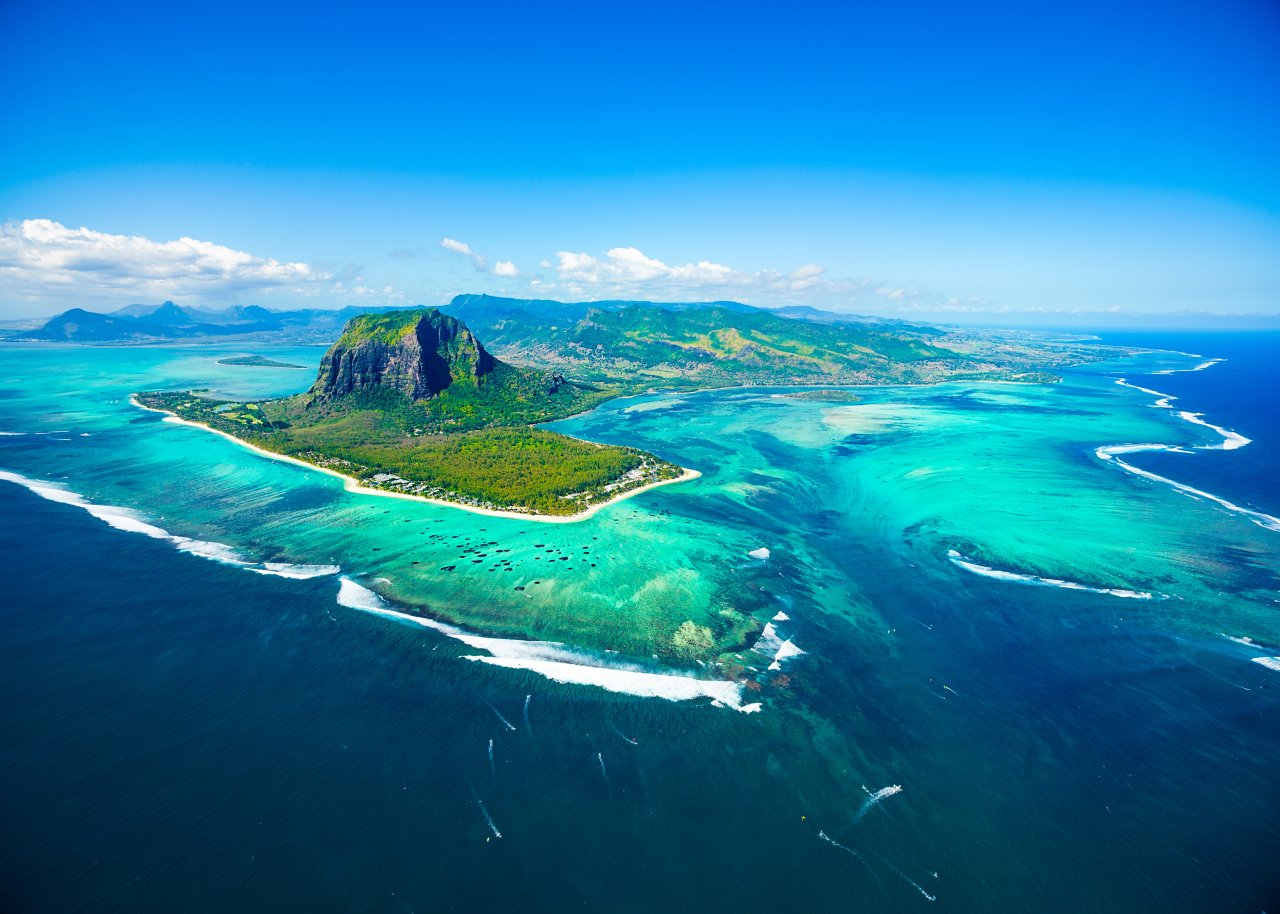The French East India Company had already occupied Bourbon (now Réunion) as a trading centre, but although the island had fertile soil and attracted as settlers a great number of pirates and their offspring by Malagasy women, it lacked harbours. The attraction of a vacant Mauritius with its well-protected bays was irresistible.
A preliminary expedition led by Guillaume Dufresne d’Arsel took possession of Mauritius in the name of King Louis XV of France in September 1715, naming it Ile de France so its ownership would be in no doubt. D’Arsel placed the French flag near what is now Port Louis, drew up a document witnessed by his officers declaring the island French and, after three days, sailed away.
Nearly seven years passed before the French East India Company actually occupied the island. In 1721, a motley crew of company officials, settlers and slaves from Madagascar, Mozambique and west Africa landed. Swiss mercenaries made up the garrison; pirates and their women accompanied them. More women were rounded up on the waterfronts of St Malo and Bordeaux and shipped out to swell the island’s population. It was hoped that a grant of land, a sum of money and the prospect of an imported wife would be enough to tempt men to settle.
For the first 14 years, the French colony followed the dismal experience of the Dutch. Only the most desperate and toughest of settlers survived, eking out a living from the pittance they earned from the company. Their appallingly treated slaves escaped to become marrons (runaway slaves), living in the forest and sabotaging the plantations.
A forlorn settlement of palm-thatched cabins sprang up near the west coast harbour of Port Louis, where the French East India Company decided to build the capital. The company, however, maintained its headquarters in Bourbon, despairing of ever controlling their reluctant settlers or making a profit on their investment in Ile de France.
The solution was an inspired one. As the new Governor of Ile de France and Ile Bourbon, the French East India Company appointed an aristocratic sea captain, Bertrand François Mahé de Labourdonnais. He was 38 and full of ambition when he sailed into Port Louis harbour in 1735.
The wretched conditions of the settlers dismayed Labourdonnais. There were 190 whites on the island and 648 blacks, most of them African or Malagasy slaves, together with a few Indians.
Labourdonnais transformed the island from a colony of malcontents into ‘the star and key of the Indian Ocean’. He was a born leader and as a naval man understood the lusty spirit of men with pirate blood flowing in their veins. Despite – or was it because of? – his own blue blood, he had an affinity with the struggling colonisers. He began by giving them self-respect and ambition.
He ordered that the seat of government of the two colonies be transferred from Bourbon, which was better established, to Ile de France and set up a council to administer the islands. He channelled the seafaring abilities of his settlers back to the sea, deliberately creating a navy of buccaneers.
The thatched hovels were demolished and in their place rose forts, barracks, warehouses, hospitals and houses, many of which survive in part of Port Louis today. Government House was built of coral blocks, roads were opened throughout the island and a shipbuilding industry commenced.
Although he had to import slaves, Labourdonnais made their lot easier by also importing ox-carts so slaves could be utilised for more skilled tasks. He turned many of them into artisans to make up for the lack of skilled men among the settlers. He also pushed through an agriculture programme that concentrated on feeding the islanders and on marketable produce. On his own estates he grew sugarcane, encouraging new settlers to start plantations of cotton, indigo, coffee and manioc. The first sugar factory was opened at Villebague in 1744, a salt pan was started and he even tried to rear silkworms.
Gradually a civilised life evolved in Port Louis, attracting colonisers from Bourbon, and even from good French families. Labourdonnais is known as the father of the colony.
In 1746, with England and France at war, Labourdonnais led an expedition of nine ships from Ile de France to India. There they defeated a British squadron and captured Madras, the most important British outpost.
Labourdonnais’s actions resulted in a conflict with Dupleix, his superior in India and caused his downfall. Dupleix wanted Madras razed to the ground but Labourdonnais refused because he knew the British would pay a ransom to get Madras back. He was accused of accepting a bribe to preserve Madras and was replaced as Governor of Ile de France. On his return to France he was thrown into the Bastille. Although in 1751 he was found innocent, he died a broken man two years later, aged 54. His statue stands in Port Louis facing out across the harbour. The town of Mahébourg (started in 1805) is named after him. So, too, is Mahé, capital of the Seychelles.
In 1764, the French East India Company, brought to bankruptcy by the Seven Years War, made over its assets, including the Ile de France, to the French king. In 1767, the Royal Government was established on the island. At that time there was a population of 18,773 that included 3,163 Europeans and 587 free blacks, mostly Hindus. The rest were slaves.
The appositely named Pierre Poivre (Peter Pepper) was picked as administrator. He introduced varieties of plants from South America, including pepper, and even offered tax incentives to planters to grow them. Under his influence, the colony developed as an agricultural and trading centre.
A French nobleman, Vicomte de Souillac, was made governor (1779–87), bringing an era of extravagance to the colony. Port Louis became renowned for its bright social life, duelling, gambling and hunting. Public affairs were neglected; fraud, corruption and dishonesty were commonplace and land speculation and scandals were rife.
In January 1790, a packet-boat arrived in Port Louis harbour from France, flying a new flag, the Tricolour. It brought news of the revolution. An elected assembly and municipal councils were set up and tribunals replaced courts of justice. A National Guard was formed, streets were renamed and revolutionary clubs started. Church property was confiscated and white, red and blue cockades were sported with delight. A guillotine was even erected in the Champ de Mars but its only victim was a dog (some historians say a goat), decapitated to try it out.
The colonists’ enthusiasm for the revolutionary principles of liberty, equality and fraternity faltered when in 1796 two agents of the Directoire, wearing splendid orange cloaks, arrived from France and informed the startled colonists that slavery was abolished. The news was received with anger and the agents had to flee for their lives.
The last French governor of Ile de France was appointed by Napoleon Bonaparte in 1803 to bring the colony back to order after 13 years of autonomy. With such a task, it was inevitable that the governor, General Charles Decaen, would be unpopular. He dissolved all the elected councils and adopted a dictatorial attitude to administration.















